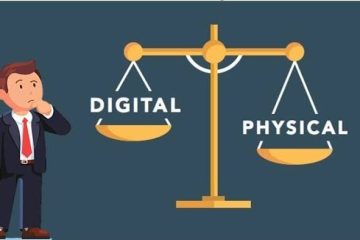Successful marketing campaigns rely heavily on effective communication as their foundation. It helps build awareness, generate leads, educate customers, build trust and credibility, and support sales.
Businesses can maximize their sales opportunities, increase revenue, and achieve their business goals by effectively communicating with customers at every stage of the buyer’s journey.
In this article, you’ll find tools and strategies to build a strong customer relationship through marketing communication, like CRM Whatsapp. Read on to find recommended tools to succeed in your marketing efforts.
What Is Marketing Communication?
Marketing communication conveys a message about a product, service, or brand to target audiences through various channels and mediums. Various tasks fall under its scope, including advertising, public relations, branding, direct marketing, digital marketing, and social media engagement. The primary goal of marketing communication is to inform, persuade, and influence target audiences to take a desired action, such as making a purchase or signing up for a service.
Furthermore, let’s take a look at why marketing communication is crucial for reaching and engaging with the target audience effectively:
- Building brand awareness: Through consistent messaging and exposure across multiple channels, such as Whatsapp Business, email, or social media, businesses can establish a strong brand presence in the customers’ minds, making them more likely to consider the brand’s offerings when purchasing.
- Driving customer engagement: marketing communication facilitates two-way communication between businesses and their audience, allowing for feedback, conversations, and interactions. Businesses can keep their audience interested and involved through engaging content, personalized communication, and interactive experiences.
- Generating leads and conversions: Effective marketing communication strategies help businesses generate leads and convert prospects into customers. By delivering targeted messages at the right time and through the proper channels, businesses can attract the attention of potential customers, nurture them through the sales funnel, and ultimately persuade them to take action, whether it’s making a purchase, signing up for a newsletter, or requesting more information.
Standing out from the competition is crucial for success in today’s competitive market. That’s why using channels close to your target audience is essential. A great way to be more present is to include WhatsApp integration into your marketing communication. This plays a vital role in reaching and engaging with target audiences effectively by connecting personally and building meaningful relationships with the audience.
5 Tools for Marketing Communication
Let’s look at various tools that facilitate effective marketing communication strategies.
Kommo WhatsApp CRM allows businesses to leverage the popularity and convenience of WhatsApp messaging to engage more personally and interactively. Integrating WhatsApp, including WhatsApp Business, into their CRM system will enable businesses to communicate directly with customers, send targeted messages, provide customer support, and even automate responses.
Businesses can establish customer connections, improve brand loyalty, and boost sales through customized communication. Leveraging WhatsApp Business within Kommo CRM ensures businesses can manage customer interactions efficiently and professionally, enhancing communication strategies and fostering meaningful connections with their audience.
- HubSpot Marketing Hub
HubSpot Marketing Hub provides a suite of tools for inbound marketing, enabling businesses to attract, engage, and delight customers throughout their journey. With features like email marketing, social media management, content creation, and analytics, businesses can create targeted and personalized marketing campaigns tailored to their audience’s needs and preferences.
By leveraging HubSpot’s automation capabilities, businesses can nurture leads, segment their audience, and deliver the right message at the right time, thus building strategic communication that resonates with their target audience.
- Sprout Social
Sprout Social empowers businesses to manage their social media presence effectively, facilitating strategic communication across various social media platforms. Through features such as scheduling posts, monitoring conversations, tracking mentions, and analyzing performance, businesses can maintain a consistent brand voice, engage with their audience in real time, and measure the impact of their social media efforts.
By understanding audience sentiment and preferences, businesses can tailor their messaging to communicate their brand values and offerings effectively.
- Hootsuite
Hootsuite is a business social media management tool that helps businesses facilitate strategic communication across multiple social media channels. By scheduling posts, monitoring conversations, and analyzing performance metrics from a centralized dashboard, companies can maintain an active presence on social media, engage with their audience, and respond to feedback on time.
With Hootsuite’s collaboration features, teams can plan and execute strategic marketing campaigns that align with their overall communication goals, ensuring a cohesive brand message across all social media platforms.
- Mailchimp
Businesses can easily create, send, and track email campaigns using Mailchimp, a powerful email marketing platform. With customizable templates, audience segmentation, A/B testing, and detailed analytics, businesses can craft targeted email campaigns that resonate with their audience and drive action.
Businesses can create lasting relationships with their subscribers by sending them personalized content directly to their inboxes through strategic email communication. This method can be used to promote products or services and nurture leads for future sales. By providing relevant content, businesses can engage with their subscribers and build trust, increasing brand loyalty and customer retention.
3 Strategic Ways to Communicate with Customers
Here are three strategic approaches for communicating effectively with customers, leveraging the tools discussed earlier in this article.
Omnichannel Communication
Interacting with customers using various platforms such as email, social media, SMS, WhatsApp, and live chat is essential to ensure a smooth and consistent experience. Allow customers to choose their preferred communication channel and ensure consistency in messaging and branding across all touchpoints.
Exclusive Offers and Rewards
Reward loyal customers with exclusive offers, discounts, and rewards programs to incentivize repeat purchases and foster brand loyalty. Use segmented messaging to target different customer segments with personalized offers based on their purchase history, preferences, or loyalty status. Encourage your customers to remain invested in your brand by creating a feeling of exclusivity and gratitude.
Personalized Recommendations
Leverage the data stored in your CRM to provide customers with personalized product recommendations and offers based on their purchase history, preferences, and browsing behavior. Use predictive analytics and machine learning algorithms to identify patterns and trends in customer behavior and anticipate their needs. Deliver targeted messages that showcase products or services relevant to each customer’s interests and preferences.



